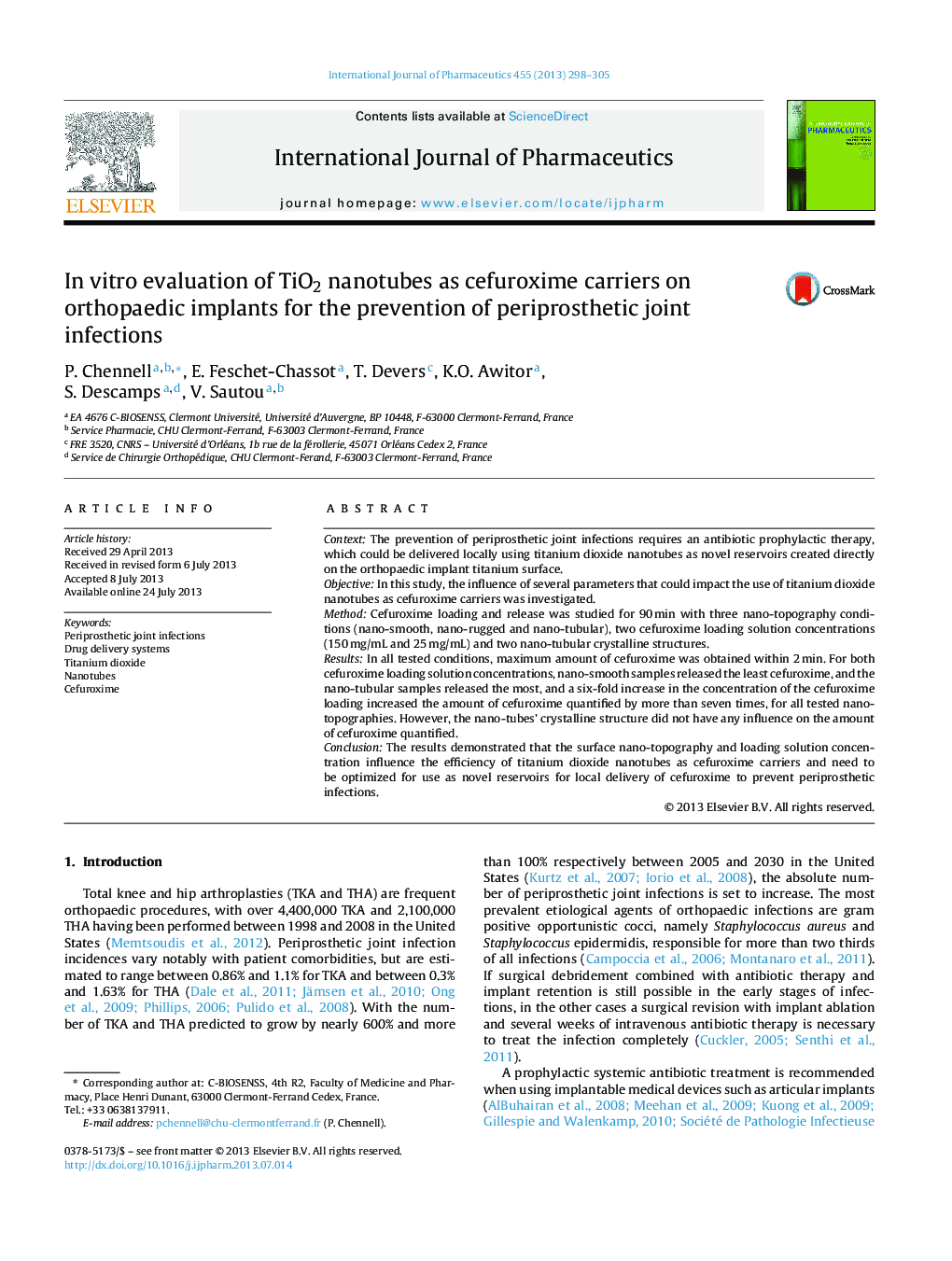| کد مقاله | کد نشریه | سال انتشار | مقاله انگلیسی | نسخه تمام متن |
|---|---|---|---|---|
| 2502099 | 1557376 | 2013 | 8 صفحه PDF | دانلود رایگان |

ContextThe prevention of periprosthetic joint infections requires an antibiotic prophylactic therapy, which could be delivered locally using titanium dioxide nanotubes as novel reservoirs created directly on the orthopaedic implant titanium surface.ObjectiveIn this study, the influence of several parameters that could impact the use of titanium dioxide nanotubes as cefuroxime carriers was investigated.MethodCefuroxime loading and release was studied for 90 min with three nano-topography conditions (nano-smooth, nano-rugged and nano-tubular), two cefuroxime loading solution concentrations (150 mg/mL and 25 mg/mL) and two nano-tubular crystalline structures.ResultsIn all tested conditions, maximum amount of cefuroxime was obtained within 2 min. For both cefuroxime loading solution concentrations, nano-smooth samples released the least cefuroxime, and the nano-tubular samples released the most, and a six-fold increase in the concentration of the cefuroxime loading increased the amount of cefuroxime quantified by more than seven times, for all tested nano-topographies. However, the nano-tubes’ crystalline structure did not have any influence on the amount of cefuroxime quantified.ConclusionThe results demonstrated that the surface nano-topography and loading solution concentration influence the efficiency of titanium dioxide nanotubes as cefuroxime carriers and need to be optimized for use as novel reservoirs for local delivery of cefuroxime to prevent periprosthetic infections.
Figure optionsDownload high-quality image (307 K)Download as PowerPoint slide
Journal: International Journal of Pharmaceutics - Volume 455, Issues 1–2, 15 October 2013, Pages 298–305